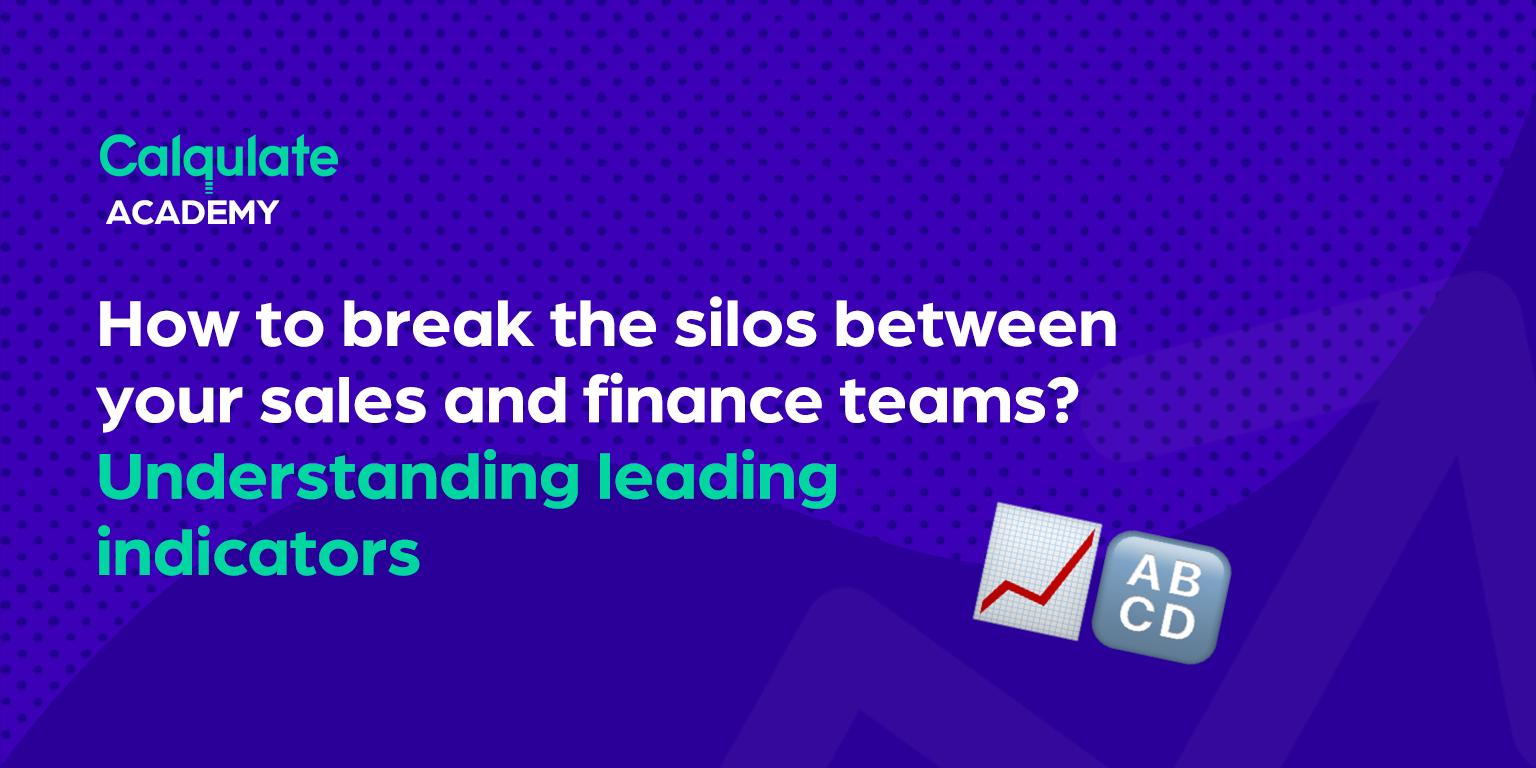If you suddenly find yourself in a situation where you don’t understand how your current and future sales funnel affect your financial performance, budgeting and forecasting, you’re not alone. Unfortunately, it is not uncommon even for highly experienced CFOs to run into that situation.
Financial reporting emphasizes the financial process of your business – all things money, in and out. From budgeting to forecasting, expense allocation, cost and revenue analysis, cash runway, and so on.
Sales reporting emphasizes the future inflow of money that is used to grow your business. According to Gartner, your sales analytics is also used in identifying, model, understand, and predict sales trends. Typically, your sales report consists of:
- Number of new leads
- Conversion rate of leads to closed deals
- Number of new customers
- The total amount of your sales pipeline
- Average Revenue Per Account (ARPA) and average deal amounts
- Sales cycle length
However, it is more than just revenue. Your sales reporting should also take into account the output of the revenue. For example:
- Sales team headcount and the targets you set for each employee
- Gross margin and EBITDA to measure company’s performance
- Cost to close sales deal - Customer Acquisition Costs
- Cashflow forecasting - are you closing monthly or annual deals?
- Churn forecasting
- Growth rate and valuation forecasting
These two sets of analytics, sales and financial, are more closely related than you would think.
Everything is connected. Everything.
I’ve been going on and on like a broken record that you should NEVER look at any metrics in isolation. Else, you run into the risk of turning that metric into a vanity metric.
When you pair two metrics together, you get a more comprehensive idea of your business performance and turn them into actionable metrics. Here at Calqulate we call them ‘Chopsticks metrics’.
Now, let’s scale this perspective a little: What do you get when you pair the analytics of two departments together?
I bet you already know the answer, and you’re right – actionable analytics, or better known as your leading indicators, and automated financial forecasting. This is the way to set your financial forecasting on autopilot.
Mutual understanding is key to success.
Friction is bound to happen when one team doesn’t understand the other. For example, your finance team may not effectively project sales across multiple products, markets and scenarios because they don’t have the relevant information they need. The finance team does not usually know what the sales pipeline looks like and how long the sales cycle is.
On the other hand, your sales team may not have a clear understanding of how their performance affects the overall financial situation of the company and what kind of investment they need to grow company revenue.
As a founder, you can already imagine the level of frustration when you don’t know the company’s strategic direction. You may also find yourself sitting through Scenario A again and again when your teams are working in silos.
Scenario A
Sales: We need X amount of seats for Tool Y.
Finance: What is the reason? That is a massive increase in our expenses.
Sales: It will help us close more deals for this month.
Finance: We don’t have the budget.
The above scenario often ends in a lot of frustration between both teams. Thus strengthening the silos they work in. Let’s assume a scenario in which these silos don’t exist. What would it look like?
Scenario B
Sales: We need X amount of seats for Tool Y.
Finance: What is the reason? That is a massive increase in our expenses.
Sales: With our current resources, we can only close an average of 10 customers per month. Our sales cycle is approximately 2 months due to the lack of capacity in handling demo requests.
By investing X amount of seats for Tool Y, we will shorten our sales cycle to 2 weeks, increase our Monthly Recurring Revenue (MRR) by 50% in 6 months and increase our gross margin from 70% to 80%. Once we hit our target of $100,000 in MRR, we could potentially recruit 2 more sales team members and raise $5M of funding. At this increased capacity, our growth rate will double and we will stretch our cash runway from 18 months to 30 months.
I won’t build on Scenario B any further because the point is: The more you know, the easier it is to navigate towards your goal through different scenarios. Likewise, the more your teams understand how they affect each other, the easier it is to work together.
Breaking the silos between your sales and finance teams
There are 2 ways to utilize your sales analytics that will satisfy BOTH your sales and finance teams:
- Sales forecasting
Your sales analytics shines a light on your sales pipeline. The sales funnel is tricky, and it takes time to close deals, depending on your subscription model. Self-serve subscription-based businesses tend to have shorter sales cycles and require fewer outbound resources to generate MRR. These growth machines work by feeding money into advertising and balancing acquisition costs with lifetime value.
However, businesses that require leads having a touchpoint with your sales team tend to have longer sales cycles and this part has a cost attached to it. If you’re in the early stages of a company, it’s normal that you’ll need to invest more in your outbound efforts. That includes tracking the number of calls made, deals closed, the average sales cycle for each deal, the number of new leads entering your funnel, conversion rate, the number of new customers, etc. You need to get through all the stages of a sales funnel to get to the bottom of the funnel - closed deals - in a predictable way. These types of growth machines require feeding money into onboarding while balancing sales cycle lengths with Net Revenue Retention and upfront billing.
- Sales staff cost and headcount forecasting
This is typically the highest cost of running a company because it is more than just paying wages and all other expenses surrounding a hiring process. It boils down to how you allocate resources to grow your revenue faster than your cost from a finance standpoint.
That includes knowing both the time and cost it requires to close deals, the cost of each headcount, the number of people needed in the team to hit your revenue target - in each part of the sales funnel. Hire too many too quickly or not enough, and you’ll find yourself shortening your cash runway sooner than you planned to.
For example, a sales team typically consists of a few:
-
- Lead research specialists (LRS) to qualify sales leads;
- Sales Development Representatives (SDR) to book meetings;
- Account executives (AE) to close deals.
Let’s say you have an MRR target of $100,000 and your sales team has the following weekly target to hit:
-
- LRS: 150 sales qualified leads
- SDR: 10 meetings
- AE: 3 deals with a total Annual Contract Value (ACV) of $10,000
Based on the above variables, you can calculate the total of lead research specialists, sales development representatives, and account executives you need to hire in order to achieve your MRR target.
Ultimately, both approaches require finance and sales to work together towards your company's revenue goals.
To break down Silos, try out this team exercise:
Have the finance team calculate the impact of spending a fictional $5000 on the marketing channel of their choice. Simultaneously, ask the sales team to calculate the impact of this campaign on the company's cashflows.
Encourage both teams to meet with each other and ask questions. Those questions will quickly highlight where the walls are highest between silos.
Key takeaway:
Traditionally, all kinds of reporting are doomed to become a very tedious process that involves a lot of menial tasks. The good news is that we now live in a world where automation is finally delivering on its promise of an easier life. Yes, that includes your sales and financial reporting, not just the robot hoover that sweeps up your crumbs.
Utilize your sales analytics to help you sharpen your sales forecasts, revenue forecasting, cashflow forecasting, and staff cost forecasting. But, more importantly, start breaking the silos between your sales and finance department. After all, mutual understanding is key to success (and reducing friction!).
Happy Calqulating!

